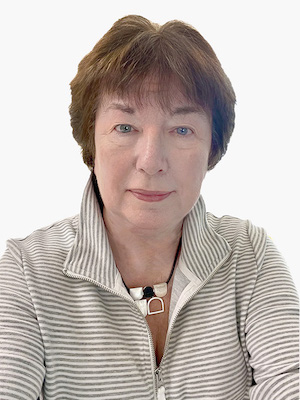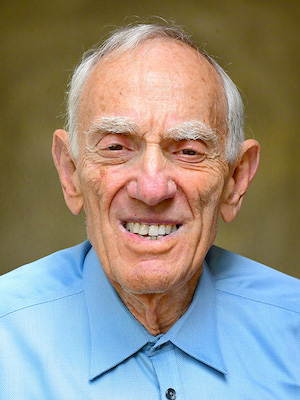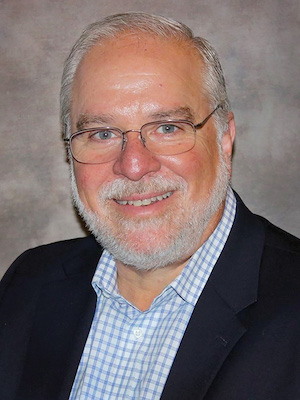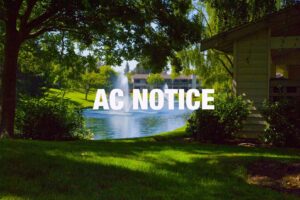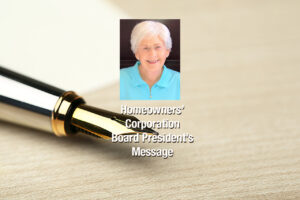Howard ‘Howie’ Blumstein
9045 Village View Loop
I’m running for the Club Board because I believe our Community is heading in the wrong direction —with skyrocketing dues and decisions being made without enough Member input.
Here’s what’s happening:
• In the FY26 budget, monthly dues jumped 27%—that’s an increase of $115.08, bringing dues to $540.03 per month.
• That’s a 43% increase from the FY24 dues of $377.40 in just two years.
• These steep increases may force friends and neighbors to move—putting more homes on the market hurting our property values.
As one concerned Member told me: “Assessments are increasing so rapidly that it will erode our property values because prospective buyers won’t be able to afford to live here.”
I’m also concerned by a recent statement in a Villager article: “The Club Board must remove constraints on Club policies and bylaws in order for us to responsibly invest in The Villages.”
Removing these constraints could give the Board a blank check to spend our money without proper oversight – leading to even higher dues in the future.
We need to:
• Control spending and avoid unnecessary costs
• Maintain our community and enhance lifestyle responsibly
• Make decisions with Member input
• Protect our home values and affordability
I bring an MBA in Finance and a strong financial background. If elected I will be a voice for the Villagers —focused on smart budgeting,
transparency, and protecting what makes our community great.
“HOWIE”—for Fiscal Responsibility and Member -First Leadership
Question 1: What are the most important issues for the Club Board to consider and how are you prepared to handle them?
Howie Blumstein answer to Question #1
Out-of-control dues increases.
The Board recently approved a staggering 27% hike in FY26 Club Dues—an increase of $115.08 per month bringing dues to $540.03. That’s a 43% jump from the FY24 dues of $377.40 in just two years. This kind of unchecked growth is unsustainable and threatens the very fabric of our community.
I will fight to reverse this trend. I will scrutinize every budget, cut waste, challenge unnecessary spending, and demand accountability. Our goal must be to preserve and enhance the lifestyle we love—but with financial discipline, not bloated budgets.
I’m deeply concerned that this FY26 budget will push longtime residents—our friends and neighbors—out of the community they helped build, simply because they could no longer afford it.
I hold and MBA in Finance and bring a proven record of financial leadership. If elected, I will be a relentless advocate for Villagers—committed to smart budgeting, real transparency, and putting Members first.
Vote HOWIE—for Fiscal Responsibility and Member-First Leadership.
Question 2: Why are you running for the Club Board? What life experiences, abilities, skills, and knowledge do you have that would qualify you to be a Board Director? How have you prepared for being a Director?
Howie Blumstein answer to Question #2
I’m running for the Club Board because I believe our Community is heading in the wrong direction—with skyrocketing dues and decisions being made without enough Member input.
I was a Club Board Director, regularly attend Club Board of Directors monthly meetings and keep abreast of important decisions that the Directors make. My interests are in maintaining our assets, providing needed services for residents, and enhancing our lifestyle.
I have an MBA in Finance and a strong financial background. If elected I will be a voice for Villagers —focused on smart budgeting, transparency, and protecting what makes our community great.
Vote HOWIE—for Fiscal Responsibility and Member-First Leadership.
Question 3: How do you, as a Club Board candidate, envision improving The Villages?
Howie Blumstein answer to Question #3
My Vision for Improving The Villages
As a candidate for The Villages Golf & Country Cub Board, my vision is rooted in fiscal responsibility, preserving our vibrant lifestyle, and putting Members first.
1. Prioritizing the Maintenance of Club Assets
First and foremost, I will ensure that our Club’s assets are properly maintained today and for years to come. A well-cared-for community preserves our high standards and supports strong home values.
2. Enhancing Our Lifestyle While Keeping Dues Affordable
I believe we can enhance our lifestyle without putting undue pressure on monthly dues. It’s critical that we continue to attract future residents by maintaining a balance between enriching amenities and keeping Club costs manageable.
3. Supporting Smart and Sustainable Improvements
Improvements that align with our budget and enhance daily lifestyle should be thoughtfully supported. Some examples of key initiatives I’d champion include:
• Improving accessability at Gazebo Park
• Upgrading Cribari Auditorium to better serve our community
• Evaluating enhancement requests from clubs to ensure they align with residents interests
4. Leveraging Partnerships for Capital Projects
The successes of community supported projects like the golf course bunker renovation, Pickleball courts and the third bocce court show what’s possible when we combine efforts. These were funded through:
• The Evergreen Villages Foundation
• The Capital Improvement Fund
• Successful fundraising campaigns
This model is a win-win for everyone and should be used for future enhancements, helping us improve our community without raising dues unnecessarily.
Vote for Howie—For Fiscal Responsibility and Member-First Leadership. Together, we can continue to make The Villages a place we’re proud to call home!
Question 4: Given that there will be increases in some costs in the coming years, how do you recommend managing our assessments?
I recommend forming a Finance Advisory Committee (FAC) immediately—composed of five residents and a Club Board liaison—to take a hard look at thei FY26 budget. Their mission: identify smart, strategic ways to reduce expenses by 10% without comprising core services, the integrity of our assets, or the quality of life we all enjoy.
The goal: act now to implement cost-saving measures that build a surplus in FY26—so we’re prepared for future increases to avoid skyrocketing dues increases and possibly obviate raising dues in FY27. Key focus areas will include staffing levels, water useage and utility contracts to ensure we’re maximizing value.
With my MBA in Finance and decades of real-world experience, I bring a sharp eye and a steady hand to budgeting—always transparent, always responsible, always resident-first.
Vote HOWIE—for Fiscal Responsibility and Member-First Leadership.
Mira Dytko
8402 Chenin Blanc Lane
My husband Tom and I moved to The Villages eight years ago.
I was born in Ukraine and earned an M.S. in Geophysics and a Ph.D in Stratigraphy and Paleontology at the Ukrainian Academy of Sciences, Lviv.
In 1991, we moved to Thunder Bay, Canada. I was a member of the Ukrainian Canadian Coordinating Counsel. Also, due to my Geological background, I was invited to speak at Thunder Bay City council about the danger of nuclear waste disposal in the Canadian Shield.
In Canada, I worked as a scientist, a project manager, and managed a staff of 20.
In California, I worked as a lab researcher at the USGS. Later, I transitioned from academic writing to technical writing. I worked for several companies including, the Boeing company, Sanmina SCI, ByteDance (Tik Tok), Google, and Hatachi.
Here at The Villages, I have participated in many activities including pickleball, tennis, yoga, U-Jam dancing, biking, and hiking.
If elected, I would like to promote and expand existing club activities, increase visibility, and motivate participation through innovation. Encourage fresh ideas and foster partnerships with clubs and its members.
Due to my unique background, life, and work experiences, I believe I will be a valuable asset to the board.
I appreciate your support in this new endeavor.
Question 1: What are the most important issues for the Club Board to consider and how are you prepared to handle them?
Mira Dytko answer to Question #1
The Club Board reviewed the 2026 fiscal year budget. It has been recommended an increase in HOA fees for current operations and to meet our strategic goals.
How am I prepared to handle them?
Recommendations:
• Better financial investments, according to our capital bank statement, we only earn 4.27% per year
• Cut expenses, our labor expenses are high
• Yearly performance review of each employee (166 total headcount)
• Increase other revenues by active member engagement and participation
Question 2: Why are you running for the Club Board? What life experiences, abilities, skills, and knowledge do you have that would qualify you to be a Board Director? How have you prepared for being a Director?
Mira Dytko answer to Question #2
To support our Board Mission and Vision
What life experiences, abilities, skills and knowledge do you have that would qualify you to be a Board Director?
• My life experiences: lived and worked in four countries
• Great research skills: worked as a scientist for over 15 years
• Knowledge and work experiences for non-profit, public, start up businesses
How have you prepared for being a Director?
• Actively engaging in the Club activities
• Participating in the Hermosa District Advisory
Committee (DAC) activities and meetings
• Participating at Board of Directors meetings
• Reading the Club Board meeting minutes and the
Villages Member Portal
Question 3: How do you, as a Club Board candidate, envision improving The Villages?
Mira Dytko answer to Question #3
Create unforgettable experiences with a strong sense of community:
• Promoting and expanding existing club activities, increasing visibility
• Improving communication through positive interactions, shared experiences, and creating opportunities for participation
• Encouraging sustainability: reduce, reuse, recycle
• Encouraging active participation through innovation
Question 4: Given that there will be increases in some costs in the coming years, how do you recommend managing our assessments?
• Continue providing necessary services and make enhancements/improvements with members’ input.
• Fix or replace aging infrastructure according to the Master plan with set priorities, schedules, and deliverables while controlling costs.
• Negotiate better contracts, such as, Comcast contract, landscaping, and legal services.
• Increase Non-Dues revenues (Food and Beverage, Pro Shop, Recreational services).
• Reduce legal and professional fees.
• Diversify the capital fund based on the short and long term goals of the Club.
• Implement energy saving resources and reduce waste.
• Regularly perform financial analysis.
Andrew ‘Andy’ Altman
7119 Via Portada
My wife Christy and I moved to the Villages about 6 years ago from The Woodlands Country Club in Falmouth, Maine. After 17 years of living and raising our three children in Monte Sereno, we went to Maine for a career opportunity. Upon retirement, in the fall of 2018, we wanted to escape another brutal New England winter and get back home to CA to be close to our children and year-round golf.
Since becoming a Villager, I have been an active golfer, bocce player, RV Club member and participant in the Senior Academy. I currently serve on the Club Board as Treasurer. I recently concluded a 4-year term as President of Congregation Shir Hadash, in Los Gatos.
I was raised in Murfreesboro, Tennessee and received my undergraduate and graduate degrees in Biochemistry from UC San Diego, and my MBA from Stanford.
Professionally, I provided the tools and resources needed to advance life science research. I began as a sales rep and progressed to VP/General Manager roles with Varian, Thermo-Fisher and IDEXX. All of those roles had global responsibility. The hallmarks of my success have been enhancing the customer experience while driving operational efficiency.
My focus as a Director is to enhance the Villager experience. We need to find ways to make our community better while controlling costs. Doing so will make our lives richer and increase the value of our properties.
Question 1: What are the most important issues for the Club Board to consider and how are you prepared to handle them?
Andrew Altman answer to Question #1
• Aging Infrastructure
• Villager Experience
Addressing our aging infrastructure and improving the Villiger experience are the two biggest challenges I see. Our Club facilities were designed to support a Senior’s lifestyle in the 1960s. Our generation is more active, and, as such, desires facilities to support that lifestyle. Doing so will increase our enjoyment, improve our home values and ensure the wellbeing of our community. Some elements like paint and carpet are more obvious than the unseen water, electrical and sewer systems that run under our homes and streets. Many of these have gone without improvement since their construction. The board must exercise operational efficiency to prioritize projects and constrain costs.
Improving the Villager Experience was the primary reason I ran for the board. We have made remarkable progress. Our Food and Beverage services have markedly improved since Chef John joined our team and shared his vision for the dining experience. Better integration between our recreation and food and beverage teams is another opportunity. Many of our clubs use outside food vendors to control costs. Imagine golf, tennis, pickleball and bocce events supported by our Villages F&B team at competitive price points. These improved experiences don’t have to cost more. They just need to become a priority for our management team.
Question 2: Why are you running for the Club Board? What life experiences, abilities, skills, and knowledge do you have that would qualify you to be a Board Director? How have you prepared for being a Director?
Andrew Altman answer to Question #2
I’m running for re-election to improve our community. I want our home prices to go up, our experiences as residents to improve and our community to flourish. This requires making tough decisions, especially around economic issues. My wife and I were fortunate to live in an active Country Club community for 8 years before moving to The Villages. That experience provides me with insight into what is possible. I will share that vision with my col-leagues and our General Manager to fulfill our stated vision: “to be the active Country Club Community of Choice for people age 55+ in Northern California.”
In my professional life, I was a General Manager of several large multinational companies. In those roles, I was responsible for both developing and implementing strategy. I know that success depends on communicating the strategy across the organization and laser focus on key deliverables. This means continually asking, “Is what we are doing aligned with our strategy?” and holding everyone accountable for staying on task. Now that we have a sold management team in place, the board must provide direction and prioritization. As a Director I will encourage crisp execution to contain cost and produce timely deliverables.
Question 3: How do you, as a Club Board candidate, envision improving The Villages?
Andrew Altman answer to Question #3
As a candidate for the Club Board, I see two key areas of focus for improving The Villages:
1) Enhancing the Villager experience and
2) Developing a long-term plan to upgrade and maintain our infrastructure.
Enhancing the Villager Experience
Our Club should feel like a place where every resident is valued — because we are the owners. That means delivering consistently excellent service, whether it’s from our wait staff, pro shop personnel, or maintenance crews. I believe we need to instill a strong customer-first mindset throughout our management team and staff. While our GM and her team have made strides in this area, continued effort and targeted training are essential to ensure every interaction reflects the level of service our residents deserve.
Upgrading Aging Infrastructure
Much of our infrastructure was designed for a 55+ lifestyle in the 1960s and is no longer suited to the needs of today’s residents. Beyond the visible amenities, we must address critical but often overlooked systems — including sewer, electrical, and water — before they fail. Proactive maintenance and upgrades are far more cost-effective than emergency repairs. That’s why I support a comprehensive, phased multi-year infrastructure improvement plan. This approach allows us to manage costs responsibly while avoiding the disruptions and financial impacts of system failures.
By focusing on service excellence and long-term planning, we can enhance our day-to-day lives, preserve the value of our homes, and ensure The Villages remains a vibrant, desirable place to live for years to come.
Question 4: Given that there will be increases in some costs in the coming years, how do you recommend managing our assessments?
Managing Future Assessments:
A Strategic Approach
As we look ahead, it’s clear that certain costs will continue to rise. To maintain the quality of services and facilities that Villagers expect, we must take a balanced approach—managing both our expenses and income thoughtfully. Central to this effort is the development of a unified strategic vision for the Club.
A resident survey is currently being developed to better understand the community’s priorities. Once we have that input, every project presented to the Board should be evaluated based on how well it aligns with our strategic plan. This will help ensure that we allocate resources to initiatives that reflect the community’s highest priorities. Not every “good idea” will—or should—move forward if it detracts from more strategic initiatives.
We recognize that improvements and enhancements typically come at a cost, often reflected in higher assessments (HOA fees). To manage this, we are actively exploring ways to diversify revenue and shift part of the financial burden away from existing homeowners:
• Revenue from Outside Events: We’ve hired an experienced manager to help grow this revenue stream through better use of our facilities.
• Initiation Fee & Non-Resident Memberships: These ideas, which would require amendments to our governing documents, could provide significant new income sources. If adopted, they would shift some of the cost of future improvements to new owners and external members.
These are strategic, long-term solutions that reflect our commitment to fiscal responsibility and to enhancing the value of our community. I support this direction and look forward to continued input from our Villagers as we move forward together.

